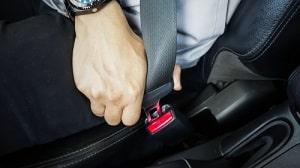121 S. Wilke Road, Suite 301, Arlington Heights, IL 60005
Home and Hospital Visits for Your Convenience
Serving Clients Across 7 Illinois Locations
3 Signs You Are Using Your Vehicle’s Seat Belt Restraints Incorrectly

Every driver knows that taking steps to decrease the chances of serious car accident injury starts the moment you get into your vehicle. The National Highway Traffic Safety Administration (NHTSA) reports that you reduce your chances of moderate to critical injury by 50 percent when you choose to buckle up. You cut your risk of injury significantly when you wear your seat belt, but wearing the restraint properly is equally important. Proper seat belt usage has been proven so effective when it comes to safety that the practice is more than a mere suggestion – it is required by law in the state of Illinois. No matter where in the vehicle you and your passengers are positioned, everyone in the car is required to wear a belt that is properly adjusted and correctly fastened. The safety protection that seat belt use provides is a major motivator for following these laws. However, a crash caused by a negligent motorist can still cause injuries, even when your seat belt is buckled.
Are You Buckling Up the Right Way?
Failing to buckle up altogether is both costly and dangerous, but buckling up incorrectly can be unnecessarily harmful, as seat belts are designed to help you, not hurt you. Make your belt restraints work for you, not against you, each time you drive your vehicle. Here are three indications you may be buckling up incorrectly:
-
Your lap belt sits high across your stomach - Have you been wearing your lap belt up over your stomach, above your waist? If so, you are placing yourself at greater risk for serious injury in the event of an accident. To wear it correctly, make sure it sits low across your hips, and the fit should be snug – not too tight, and not too loose. If your vehicle has an automatic shoulder belt, do not forget to fasten your lap belt as well. The shoulder strap alone is not enough to protect you in a collision. Should you be hit, neglecting this belt makes you much more vulnerable, as it could cause you to slide out of the seat during impact.
-
Your shoulder belt crosses under your arm or behind your back - It may be tempting to push the shoulder belt out of your way, but if you have been driving with the belt crossed under your arm or behind your back, this incorrect placement of the belt can worsen your injuries in a crash, especially when it comes to internal injuries. Ensure that the shoulder belt is never placed behind your back and that it is always positioned across your chest and shoulders with very little slack.
-
You are slouching in your seat – In addition to seat belt position and placement, how you sit while wearing your belt plays a big part in how effective the restraint is during a collision. If you have been slouching or resting your feet up on the dashboard as a passenger, you are limiting your seat belt’s effectiveness, or you may even be eliminating the restraint's usefulness entirely. You should sit completely upright with your back lined up properly with the seat, and your feet should be flat on the floor.
Contact a Palatine Personal Injury Attorney
While proper seat belt use can and often does save lives, accidents still happen, and injuries can occur, despite your best efforts to stay safe. If you have been involved in a collision due to another driver’s reckless behavior, you may be able to seek damages for your injuries. Ensure that your rights are protected and that you receive fair compensation by speaking with a knowledgeable Arlington Heights car accident lawyer as soon as possible. The skilled attorneys at Newland & Newland LLP are dedicated and equipped to fight for your best interests. Schedule a free consultation by calling us today at 847-797-8000.
Sources:
http://www.isp.state.il.us/safety/restraints.cfm
https://www.nhtsa.gov/sites/nhtsa.dot.gov/files/seatbeltuse.pdf

 Spanish
Spanish


















